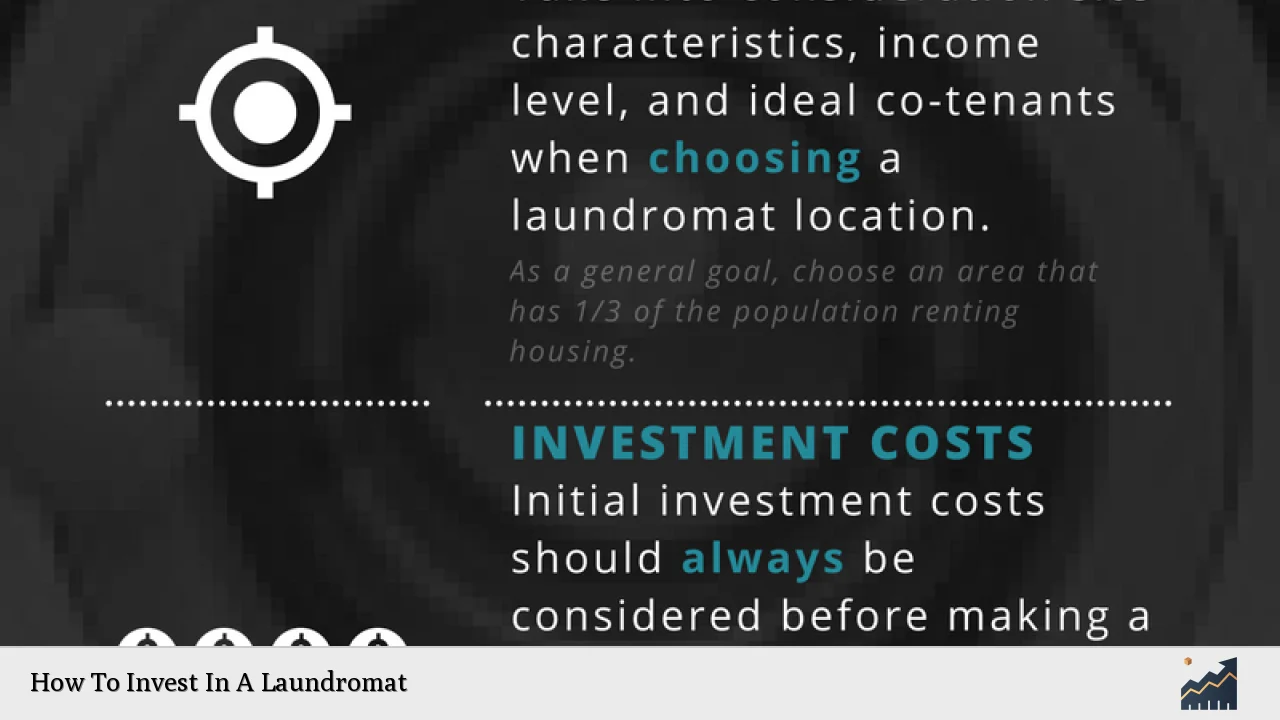Investing in a laundromat can be a lucrative opportunity for individuals seeking to enter the business world with a relatively stable and resilient model. Laundromats typically require lower overhead costs compared to other businesses, and they often provide consistent cash flow due to the essential nature of laundry services. This guide will explore the market trends, implementation strategies, risk considerations, regulatory aspects, and future outlook for investing in a laundromat.
| Key Concept | Description/Impact |
|---|---|
| Market Size | The laundromat industry generates approximately $6 billion in annual revenue in the U.S., with about 35,000 laundromats operating nationwide. |
| Profit Margins | Average profit margins range from 20% to 35%, with top-performing laundromats achieving margins as high as 50%. |
| Initial Investment | Starting a laundromat typically requires an investment between $100,000 and $940,000, depending on location and services offered. |
| Cash Flow | Laundromats can generate cash flow between $15,000 and $300,000 annually, making them attractive for investors. |
| Market Trends | There is a growing trend toward technology integration, including app-based payment systems and enhanced customer service options like wash-dry-fold and pickup/delivery services. |
Market Analysis and Trends
The laundromat industry has shown resilience even during economic downturns. According to IBISWorld, the market size has grown at a compound annual growth rate (CAGR) of 0.9% from 2019 to 2024, reaching an estimated $6.7 billion in 2024. However, projections indicate a potential decline over the next five years as more consumers opt for home laundry solutions due to decreasing interest rates and rising affordability of washing machines.
Key Market Insights
- Location is Crucial: The success of a laundromat heavily relies on its location. Urban areas with high foot traffic and proximity to residential neighborhoods tend to perform better.
- Service Diversification: Laundromats that offer additional services such as wash-dry-fold or pickup/delivery are likely to see increased revenue streams.
- Technological Integration: The adoption of cashless payment systems and automated management software is becoming increasingly common, enhancing operational efficiency and customer satisfaction.
- Demographic Shifts: Changes in demographics due to urban migration present new opportunities for laundromat owners to cater to diverse customer bases.
Implementation Strategies
Investing in a laundromat involves several steps that require careful planning and execution:
Steps to Invest
- Conduct Market Research: Analyze local demographics, competition, and consumer behavior to identify profitable locations.
- Financial Assessment: Evaluate existing laundromats’ financial statements (profit and loss statements) to understand their revenue streams and expenses.
- Choose Between Buying or Starting: Decide whether to purchase an existing laundromat or start a new one. Each option has its pros and cons regarding cost, brand recognition, and operational challenges.
- Secure Financing: Determine your funding needs. Initial investments can range from $100,000 to $940,000 depending on various factors such as equipment costs and lease agreements.
- Select Equipment Wisely: Invest in reliable machines that minimize maintenance costs. Newer machines tend to attract more customers due to their efficiency.
- Implement Marketing Strategies: Develop marketing plans that leverage local advertising, social media engagement, and partnerships with local businesses.
- Focus on Customer Experience: Enhance the customer experience by providing amenities such as free Wi-Fi, comfortable seating areas, and vending services.
Risk Considerations
While investing in a laundromat can be rewarding, it is essential to consider potential risks:
- Equipment Maintenance: Older machines may require frequent repairs which can increase operational costs.
- Competition: High competition in urban areas can pressure pricing strategies and profitability.
- Economic Factors: Economic downturns may affect discretionary spending; however, laundry services remain essential.
- Regulatory Changes: Compliance with local regulations regarding health standards and environmental laws is crucial for operation.
Regulatory Aspects
Investors must be aware of various regulatory requirements when operating a laundromat:
- Business Licensing: Obtain necessary licenses from local authorities before starting operations.
- Health Regulations: Ensure compliance with health codes related to cleanliness and sanitation practices.
- Environmental Regulations: Be mindful of regulations regarding water usage and waste disposal; consider eco-friendly practices which may also attract environmentally conscious customers.
Future Outlook
The future of the laundromat industry appears promising despite potential challenges:
- Technological Advancements: Continued innovation in payment systems (e.g., mobile apps) will likely enhance customer convenience and operational efficiency.
- Service Expansion: The demand for additional services like wash-dry-fold will continue to rise as consumers seek convenience.
- Market Adaptation: Laundromats that adapt quickly to changing consumer preferences will thrive; this includes offering eco-friendly options or loyalty programs.
Frequently Asked Questions About How To Invest In A Laundromat
- What is the average ROI for a laundromat?
The average return on investment (ROI) for laundromats typically ranges between 20% to 35%, depending on various factors including location and service offerings. - How much does it cost to start a laundromat?
The initial investment required can vary widely but generally falls between $100,000 and $940,000 based on size, location, and equipment. - Are laundromats considered passive income?
While they can provide passive income potential through automated systems and reliable staff, some level of management involvement is usually necessary. - What are common risks associated with owning a laundromat?
Main risks include equipment breakdowns, fluctuating utility costs, competition pressures, and regulatory compliance issues. - Do laundromats perform well during economic downturns?
Historically, laundromats have shown resilience during recessions as laundry remains an essential service. - How important is location for a laundromat?
A prime location near residential areas significantly impacts foot traffic and overall profitability. - What additional services can increase revenue?
Offering services like wash-dry-fold or pickup/delivery can enhance revenue streams beyond traditional self-service laundry. - How do I finance my laundromat investment?
Financing options include personal savings, bank loans, equipment financing options, or partnerships with investors.
Investing in a laundromat presents an opportunity for steady income with manageable risks when approached strategically. By understanding market dynamics and implementing effective operational strategies while remaining compliant with regulations, investors can position themselves for success in this enduring industry.

